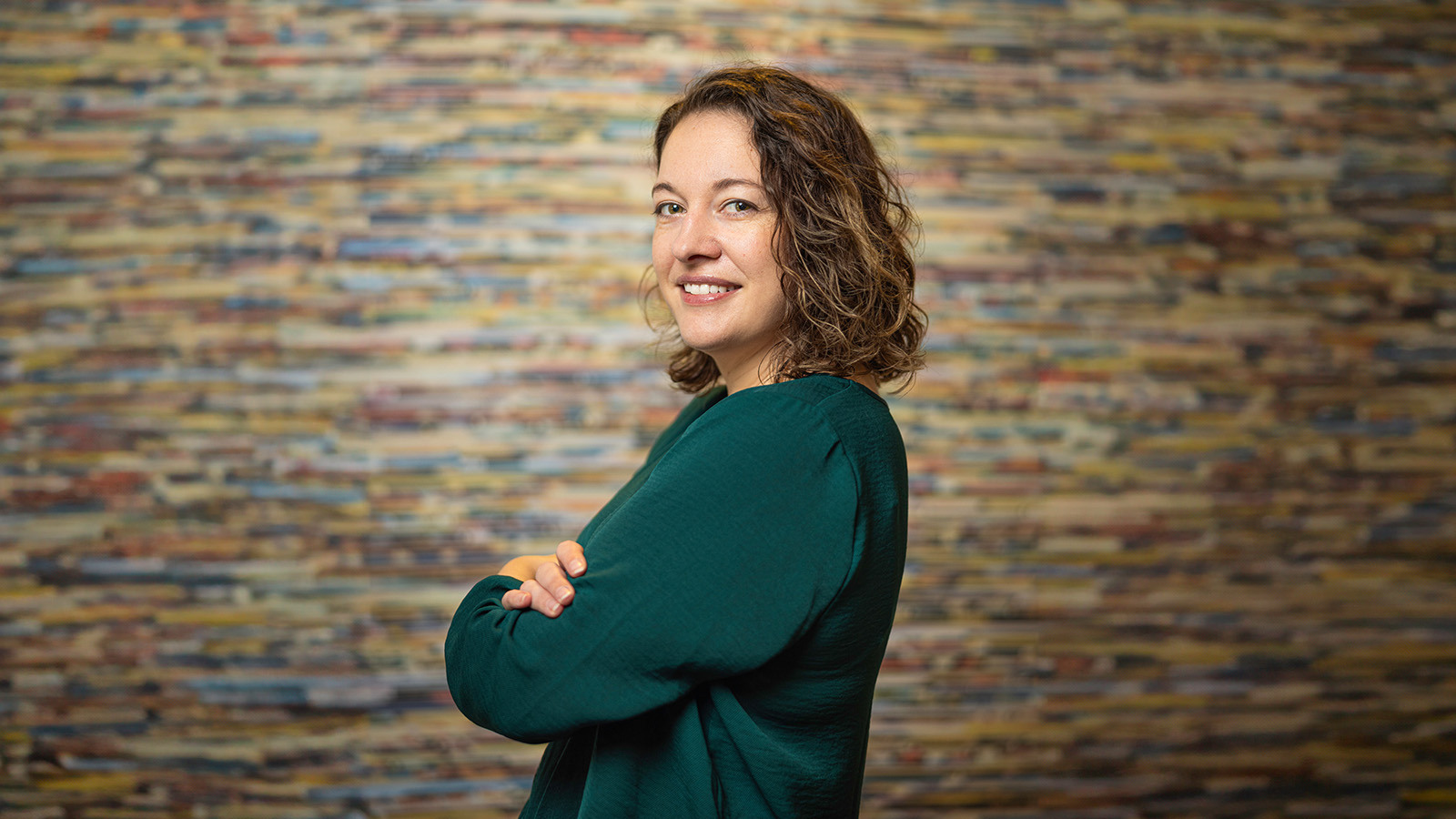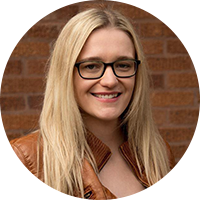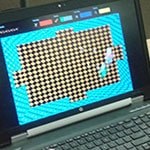Full Sail Stories
Published Jan 31, 2024
Faculty Spotlight: Aron Gelineau
Course director Aron Gelineau has created interactive digital experiences for retailers, the NFL, a children’s hospital, and more.

When students sign up to study game art at Full Sail, they’ll learn technical and artistic skills to create interactive 3D art for industries from games to simulation to film and beyond. They’ll also learn from instructors with plenty of industry experience – like Aron Gelineau, who has worked as a motion designer and generalist animator for sports teams, retailers, a children’s hospital, and more. Her professional projects have relied on the same software and workflow that she teaches in Game Animation I.
Aron was always interested in art and design. She earned a bachelor’s degree in fashion from Kansas State University, but she was drawn to classes that focused on quality control and design and enjoyed using software like Photoshop and Adobe Illustrator. After she graduated, Aron decided to dial in on those areas and signed up to learn about computer animation at Full Sail.
“I liked animation the most because before, I was looking at how clothes moved and all that stuff, so I was just really thinking about the body and body mechanics. It connected [to animation] really well. I wasn't quite sure what I wanted to focus on when I went [to Full Sail] to study computer animation and I just connected the most to character animation,” she shares.
Shortly after graduating from Full Sail, Aron started working as a motion designer for an advertising agency, then took on additional roles in graphic design and social media content creation. She eventually landed at Dimensional Innovations, a design firm that specializes in interactive digital experiences.
Aron tackled new challenges at Dimensional Innovations. For a project with the Cleveland Indians’ Kids Clubhouse, she helped create attract loops for multiple touchscreens to encourage children to interact with videos and other digital content about the Indians’ players. Aron also worked on attract loops for the Minnesota Vikings – she used Autodesk 3ds Max software to create imagery of ice moving up a screen, then breaking apart. But she’s proudest of the work she did for Nick’s Theater at the University of Iowa Stead Family Children’s Hospital.
Nick’s Theater is an immersive physical therapy experience that helps children who have been confined to hospital rooms gain the mobility they need to go home. The space’s games use Kinect motion-sensing technology to track a user’s arm movements, so they’re accessible for patients at various levels of physical activity. Aron took part in developing the theater’s overall concept, helped write stories for some of the interactive games, and created motion design assets like attract loops.
“I was helping [with Nick’s Theater] from the beginning,” Aron explains. “I was asked to create some elements that could help sell the project and then I would help develop those items as we started to talk to the client more. I helped design some of the games; I helped create some stories. I helped create props and rig those and animate those for hotspots in one of the stories.”
That hard work paid off: On top of creating a space that made a difference to children leaving the hospital, Aron’s team won an APEX Award at the international Digital Signage Expo. The experience also lined up nicely with the skills Aron teaches her Full Sail students.
“[The work for Nick’s Theater] connects back very well to the current class I’m teaching, because we animate props, we rig them, we export them out of Maya and import them into Unreal Engine. And that's something that I actually did for Nick’s Theater,” she says.
Aron’s work experience in various industries showcases the different directions that students can take with their game art education – and she’s committed to helping each one of her students gain the knowledge they need to pursue animation.
“My teaching philosophy is that everyone is capable. From my experience, not every student gets animation right away, or they’ll get bits of it, but not the full picture. What one student understands, another one won’t. I lean into the fact that everyone is capable, and I try to help fill in the holes where their knowledge is missing.”



